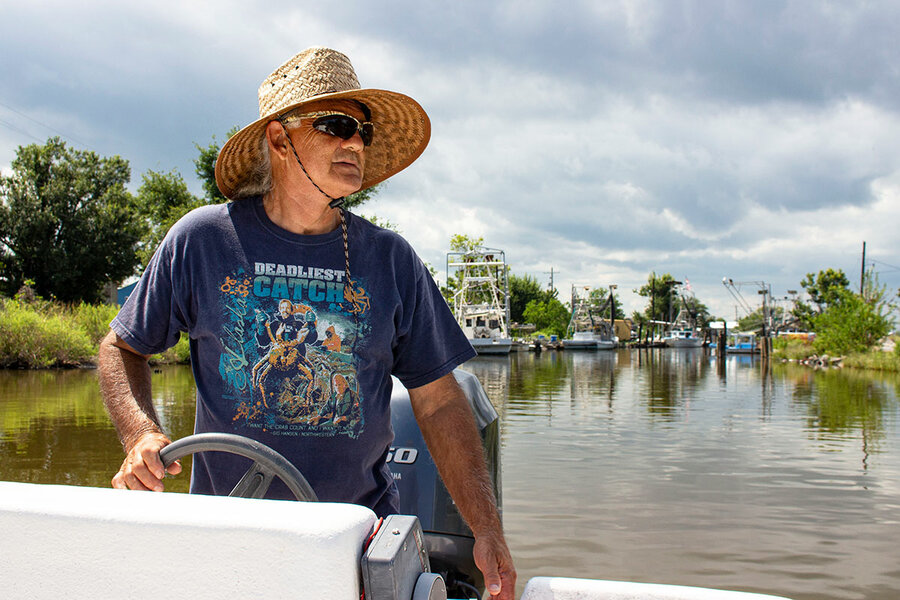Original publication by Laura Benshoff for npr.org on 12 September 2022

Laura Benshoff/NPR
BINGHAMTON, New York — A soaring bald eagle is spellbinding. A growling grizzly is awe-inspiring. A swimming hellbender? You might not be able to picture that one.
On a recent hot summer day, biologist Michelle Herman is carefully swabbing this kind of rare, giant salamander for invasive fungus by a tributary of the Susquehanna River. She is part of a small group of biologists, state wildlife technicians, and volunteers supporting the hellbender in this area, where their numbers have sharply declined.
“They don’t have many advocates so I’m happy to be a hellbender advocate,” says Herman, who works for The Wetland Trust, a nonprofit conservation organization.
Some high-profile species, such as the bald eagle, are conservation success stories. But thousands of less charismatic species are competing for scarce resources in the United States, with as many as a million facing extinction around the world, according to the United Nations.
Amphibians, such as hellbenders, are declining for a number of reasons from habitat destruction to climate change. Hellbenders live under giant rocks in clean, fast-moving streams, where they like to eat crayfish. Their presence is a sign of good water quality, says Herman.
Existing federal conservation funding only covers about 5% of what’s needed to help the more than 12,000 “species of greatest conservation need,” including the hellbender, according to the Alliance for America’s Fish and Wildlife.

Laura Benshoff/NPR
Champions of the species here have so far cobbled together resources from the Bronx Zoo and elsewhere to raise them in captivity, tag them with microchips, and release them back into the wild. But they have also tried a number of unorthodox tactics to raise the animal’s profile and attract conservation funding.
Peter Petokas, research associate with the Clean Water Institute at Lycoming College, has created a crowdfunding page for the work. His work helped inspire a group of high school students who lobbied the Pennsylvania legislature to declare it the official state amphibian.
“They borrowed my Hellbender costume, which is really cool,” Petokas says. After two years of canvassing elected officials, the students succeeded. But none of this led to more funding, he says.

Laura Benshoff/NPR
Federal funding tends to go toward game species
Since the 1930s, the U.S. has taxed hunting and licenses, as well as guns, ammo, and other equipment, to raise money for conservation. In the 1950, that model was expanded to include fishing licenses and equipment with the Dingell-Johnson Act.
Mike Leahy, director of wildlife, hunting, and fishing policy with the National Wildlife Federation, says as a result that money often goes to species that hunters and anglers care about, such as deer and elk.
“There has been this gap in getting funding to species that aren’t hunted and fished,” he says.
But many species identified as in-need of conservation have a less direct relationship to humans. Invertebrates such as mollusks and insects, as well as fish and bird species are all threatened in large numbers, according to the U.S. Department of the Interior.
Many conservationists talk about the loss of these species like flying a plane while slowly removing each bolt, or a game of Jenga. Each one gone weakens whole ecosystems. But others prefer to think about conservation in positive terms, as an investment.
“I think the real value of preserving a really rare and unique species is to have it there for the future, for everybody else to enjoy,” Petokas says.

Laura Benshoff/NPR
A bill to provide more funding has bipartisan support
Wildlife advocates hope that this imbalance could soon change. A bill called the Recovering America’s Wildlife Act, which passed the House of Representatives earlier this summer, would dramatically increase how much the federal government spends to protect U.S. wildlife by creating a $1.3 billion annual fund for conservation.
Led by Senators Martin Heinrich (D-N.M.) and Roy Blunt (R-Missouri), the Senate bill has more than 40 co-sponsors, including 16 Republicans.
“By conserving wildlife habitat, we’ll also preserve outdoor recreation activities like hunting, fishing, and wildlife viewing that support millions of additional jobs,” said Blunt, earlier this year.

Laura Benshoff/NPR
The money would go to states and tribal governments to decide how to spend. The Act would also require that 15% of the amount support federally-listed endangered species. But it is not clear if the bill, which must still come up with a funding source to offset the cost of increased conservation spending, will come up for a vote this year.
“If it passes, [it] will really shift the paradigm. It will be an absolute game-changer, ” says Sarina Jepsen, endangered species program director at the Xerces Society, a nonprofit specializing in the conservation of invertebrates.




